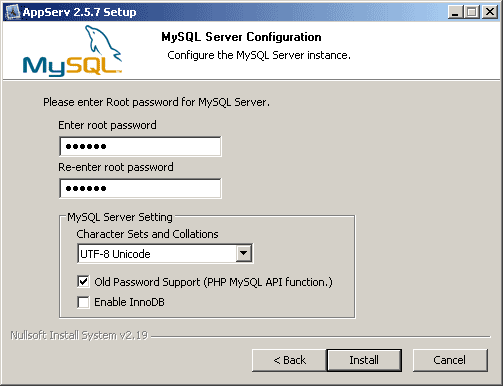

From MySQL 5.7, they are created as InnoDB by default. The temporary table is created in-memory or on-disk, depending on the configuration, and it’s dropped immediately at the end of the query. #sql9a0_7_c.frm # This is the MEMORY engine file. Until MySQL 5.6, all the on-disk temporary tables are created as MyISAM. #sql9a0_7_d.MYI # MyISAM index file for temporary table. #sql9a0_7_d.MYD # MyISAM data file for temporary table. #sql9a0_7_d.frm # This is the MyISAM temporary table.

The temporary tables are stored in C:\Windows\Temp and have unusual names, but internally the data is stored in the same way. MyISAM was the default storage engine for the MySQL relational database management system versions prior to 5.5 released in December 2009. Table_m # No MYD or MYI file for the MEMORY engine. Table_innodb.MYI # MyISAM table index file. Table_innodb.MYD # MyISAM table data file. mysql> create table Followers -> ( -> FollowerId int, -> FollowerName varchar(20) -> ) Query OK, 0 rows affected (0.32 sec) Let us check the default engine type of the above table with the help of SHOW TABLE command. The query to create a table is as follows. I then checked the directory: C:\ProgramData\MySQL\MySQL Server 5.5\data\test (on Windows) and the files present were: Now create a table and check for the default engine MyISAM. After running the following commands: CREATE TABLE test.table_myisam (x int) ENGINE=MyISAM ĬREATE TABLE test.table_memory (x int) ENGINE=MEMORY ĬREATE TEMPORARY TABLE test.temp_table_myisam (x int) ENGINE=MyISAM ĬREATE TEMPORARY TABLE test.temp_table_memory (x int) ENGINE=MEMORY It should be possible to actually find the files that are created in the filesystem when the temporary tables are created. If you specify the MEMORY engine, the data will only be stored in memory. By default the table data will be stored on disk. To learn more, please see the MySQL Backup feature page.It depends on what engine you specify. Handy Backup supports "live" backup and recovery of MyISAM tables that can be done in real time and doesn′t expect you to stop your MySQL server. Transaction-safe storage engines automatically roll back all operations included in a transaction if some of them fail to complete. The idea of transactions implies that deleting a row in the "parent" table ( CUSTOMERS) should delete all rows of the "child" table ( ORDERS) that have a matching foreign key, and this operation can′t be stopped in the middle. For example, say that you have a CUSTOMERS table containing the list of customers, and an ORDERS table containing the list of orders (each order is associated with some customer). operations modifying several linked tables at once. Without transactions, you can′t create referential actions, i.e. This is explained by table-level locking: any time an application inserts data or updates a MyISAM table, all other operations are locked out.Īnother big critique of MyISAM is the lack of transactions support. To change your default storage engine back to MyISAM, put default-table-typemyisam under the mysqld section in your my.cnf and restart mysqld. Those two specific engines you asked about (InnoDB and MyISAM) have different design goals. To see what your default storage engine currently is do: mysql> SHOW engines MyISAM has long been the default, but someone might have changed it. However, if your application performs simultaneous reading and writing in one table, the engine′s performance falls down dramatically. With MyISAM, a DML statement will obtain an exclusive lock on the table, and while that lock is held, no other session can perform a SELECT or a DML operation on the table. MyISAM is very fast, and provides the best reading speed of all storage engines available in MySQL.


 0 kommentar(er)
0 kommentar(er)
